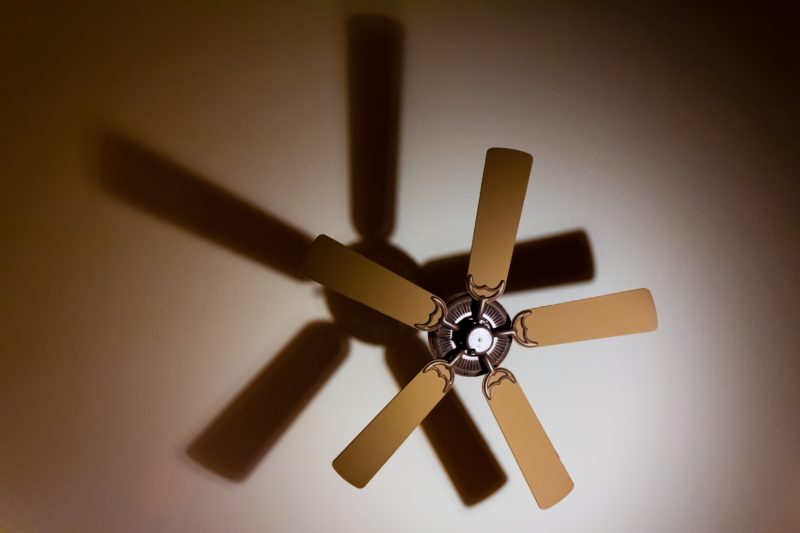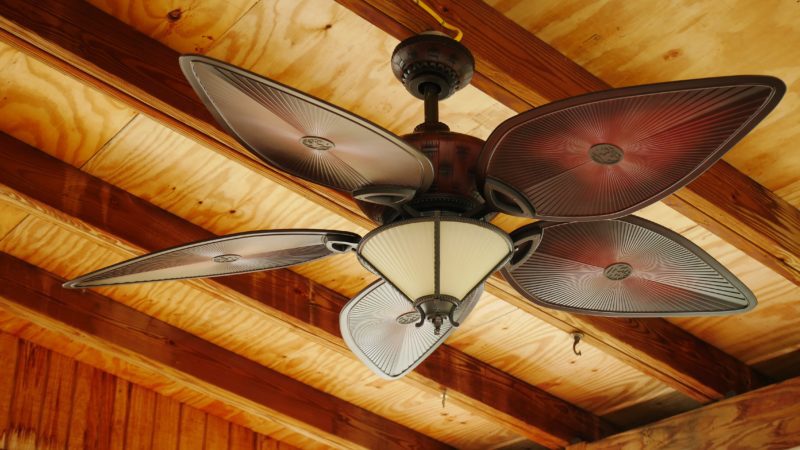
Here are some facts that you should be aware of before purchasing your first solar powered fan.
Sunlight may have an impact on fan speed and function.
Solar panels charge the batteries in the solar powered fan, which assist to power the fan itself. If the batteries are not completely charged, the fan may revolve more slowly or cease to function entirely.
That is why it is critical to install the solar panel in an area where it will receive lots of sunlight. Those who live in locations with a lot of overcast days or whose homes are covered by trees may want to consider investing in a solar powered fan with a backup power supply so they may use the fan even on gloomy days. Otherwise, a regular electric fan will have to suffice as a backup.
Short cords may restrict placement options.
When selecting a solar powered fan, it is always vital to consider where you would position the solar panel to ensure that it receives the most sunlight, followed by where you would like to place the fan. Calculate the distance between those points and look for a solar-powered fan with a cable at least that length. Keep them as close together as possible since an overly lengthy connection might be a tripping hazard.
The majority of solar powered fans come with a chord that is at least six feet long, however this might vary. If you need to cover more ground, depending on the sort of wire your fan uses, you may be able to replace it with a longer one from a home improvement store.
There Are Only a Few
Solar-Powered Fans Available
While solar-powered lights have been around for a while and have improved significantly since their introduction, solar fans are still a rare find. There aren’t many versions on the market right now, and the ones that are available only come in a few designs. Solar attic fans are increasingly popular, but solar ceiling fans and window fans remain scarce.
This may alter with time, and the technology utilized in these fans will most likely improve, allowing them to be more powerful and long-lasting. However, for the time being, your options for design and function may be restricted.

How to choose the best solar powered fans?
When comparing solar fans, we looked at the amount of space they could cool, the size of the fan and the solar panel, the amount of noise they made, and any other features they had.
Covered Area
When selecting a solar powered fan for a living area, it is essential to examine the size of your room in order to select a suitable model. Smaller areas can get away with a desktop or lightweight portable solar fan, but bigger areas would require a freestanding or ceiling fan to provide enough coverage. Our top selections include fans of various shapes and sizes, so there’s something for everyone.
Fan and Solar Panel Dimensions
The amount of area occupied by the fan is also significant. A big fan may overshadow the space, and an improperly positioned solar panel might be an eyesore. The size of the solar panel might also have an impact on the performance of the fan. If it’s big and difficult to set in direct sunlight, the fan may struggle to keep powered or may not last long. The finest solar powered fans include small solar panels with lengthy cables, allowing you to put the fan and solar panel anywhere you want them.
Noise
Every fan makes some noise. It’s typically not enough to be a problem, but extremely loud fans might make watching TV, listening to music, or conversing with others difficult. We sought to concentrate on fans that provided strong, cooling air circulation without being so loud that they drowned out all other sounds.
Additional Features
Some solar panels have accessories such as USB charging connections, allowing you to charge other devices while using the solar panel. They may also include built-in lighting, which may help you save money on your utility cost. Fans with several speeds are more popular, allowing you to choose how rapidly air flows about the room. It is up to you to determine which of these characteristics will benefit you, but they may assist you in making a decision if you are torn between two comparable fans.
How to Maximize the Performance of Your Solar Fan
You would probably anticipate that solar fans are simple to operate and maintain, but there are a few things you can do to get the most out of your solar fan.

Installing Your Solar Panel
If you pick a fan with a separate solar panel, you must be extremely cautious about where you put the panel. Some of these fans have waterproof panels, while others do not, so depending on the model you pick, outdoor placement may be out of the question. If you’re searching for a permanent outdoor fixture, make sure to thoroughly study the model specifications.
If you’re planning to put your solar panel indoors, try to find a window that faces south. This will provide you the greatest solar exposure throughout the day, giving you more power time. If you don’t have a south-facing window, you might not want to attach your panel and instead keep it portable. This allows you to shift it from window to window based on the time of day.
If you go for an all-in-one device, you should be careful about where you put your fan. Most are not designed to be kept out in severe weather, so if you take it camping, make sure to bring it inside if there is a chance of rain.
Maintain Cleanliness and Clarity
Whatever location you choose for your solar panel, maintain it clean and clear. Any type of dust or particle buildup on the solar panel will reduce its efficiency, resulting in less electricity. Also, make sure the panel is free of any shadow. Even a tiny shadow cast across a portion of the panel can greatly reduce its capacity to generate electricity.
Also, maintain the fan motor free of dust and dirt. As the fan draws in air, it also draws in dust and other particles. This dust can accumulate in the fan, forcing it to work harder and consume more energy. The cleaner it is, the more efficiently it will operate and the longer it will endure.



